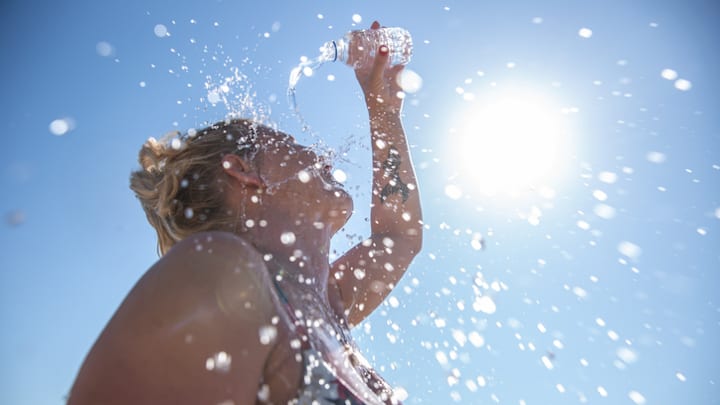On particularly swampy days, the meteorologist might tell you that there’s 100 percent humidity outside. While that might seem to suggest there should be pure rain showers, there may not even be a hint of drizzle. So what does it mean to reach peak humidity?
Humidity vs. Dry Heat
The percentage of humidity is not measured by the ratio of water to air. Instead, it looks at how much water vapor the air can hold at a certain temperature. When the humidity is at 100 percent, it's holding the absolute maximum; that means no more water can evaporate because the atmosphere has reached its limit.
Humid days feel terrible in part because our sweat can’t evaporate, making it feel much hotter outside. Things like temperature and pressure affect the air’s capacity to hold water vapor; the hotter it is, the more vapor the air can hold. If the temperature or pressure change, then rain is possibly in the forecast.
Dry heat often feels more comfortable versus humid heat at the same ambient temperature. Without a lot of moisture in the air, your sweat evaporates more readily and cools you off, whereas humidity provokes that unpleasant sticky feeling because sweat cannot evaporate as easily.
Humidity vs. Dew Point
Meteorologists also mention dew points when giving weather forecasts. According to the National Weather Service, the dew point is the temperature at which the air can hold no more moisture (in other words, the temp at which it achieves 100 percent humidity). At that point, moisture precipitates out of the atmosphere as dew, fog, or rain. The higher the dew point, the stickier it feels—and it can be a good clue to how uncomfortable the “feels like” temperature is outdoors.
You Might Also Like ...
• Science Confirms That Summer Heat Makes Us Grumpy
• Does Drinking a Hot Drink Really Cool You Down?
• The Reason Heat Makes You So Tired
The National Weather Service offers this example:
“A temperature of 30 and a dew point of 30 will give you a relative humidity of 100 percent, but a temperature of 80 and a dew point of 60 produces a relative humidity of 50 percent. It would feel much more ‘humid’ on the 80 degree day with 50 percent relative humidity than on the 30 degree day with a 100 percent relative humidity.”
Luckily, you don’t have to do the math each time you want to know how muggy it is.
Dew Point Cheat Sheet
Dew Point | Feeling Outside |
|---|---|
45° to 50°F | Absolutely Perfect |
50° to 55°F | Very comfortable |
55° to 60°F | Pleasant |
60° to 65°F | A Tad Sticky |
65° to 70°F | Muggy |
70° to 75°F | Very Uncomfortable |
75° to 80°F | Absolutely Gross |
But in order for rain showers to occur, humidity has to be at 100 percent up where the clouds are. At ground level, meanwhile, it can be at any percentage of moisture.
Discover More Weather Facts:
A version of this story was published in 2016; it has been updated for 2025.
